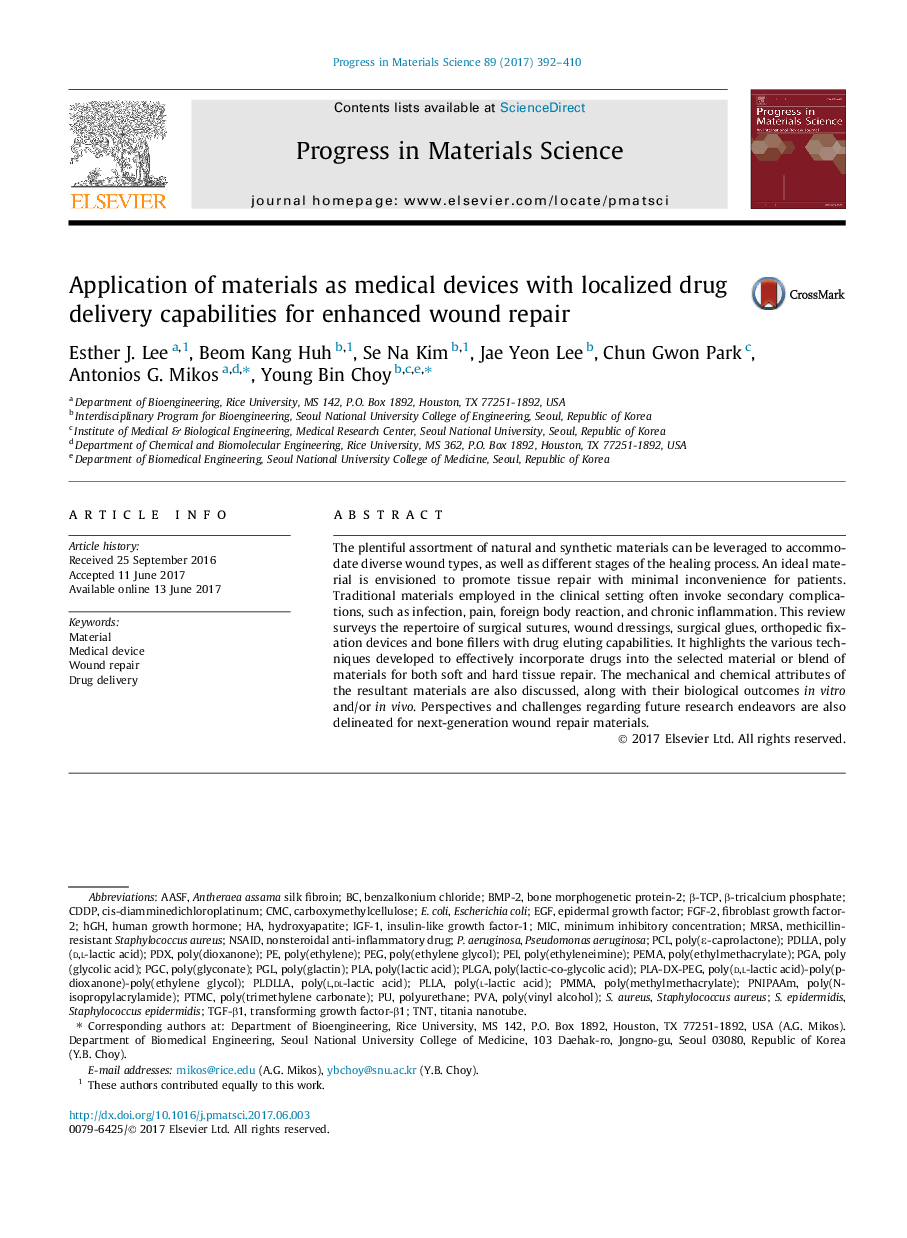| Article ID | Journal | Published Year | Pages | File Type |
|---|---|---|---|---|
| 5464354 | Progress in Materials Science | 2017 | 19 Pages |
Abstract
The plentiful assortment of natural and synthetic materials can be leveraged to accommodate diverse wound types, as well as different stages of the healing process. An ideal material is envisioned to promote tissue repair with minimal inconvenience for patients. Traditional materials employed in the clinical setting often invoke secondary complications, such as infection, pain, foreign body reaction, and chronic inflammation. This review surveys the repertoire of surgical sutures, wound dressings, surgical glues, orthopedic fixation devices and bone fillers with drug eluting capabilities. It highlights the various techniques developed to effectively incorporate drugs into the selected material or blend of materials for both soft and hard tissue repair. The mechanical and chemical attributes of the resultant materials are also discussed, along with their biological outcomes in vitro and/or in vivo. Perspectives and challenges regarding future research endeavors are also delineated for next-generation wound repair materials.
Keywords
PDXPGAP. aeruginosaPCLNSAIDPLAMICIGF-1FGF-2PLLABMP-2CDDPPDLLAPGCPGLPNIPAAmcis-diamminedichloroplatinumPTMCPEMAPEIEGFTGF-β1E. coliβ-TCPPLGACMCPVAhGHS. Epidermidisβ-tricalcium phosphateStaphylococcus aureusMRSAmethicillin-resistant Staphylococcus aureusS. aureusStaphylococcus epidermidisEscherichia coliinsulin-like growth factor-1Benzalkonium chlorideTransforming growth factor-β1Drug deliveryWound repairTnTTitania nanotubeMinimum inhibitory concentrationnonsteroidal anti-inflammatory drugMedical devicePseudomonas aeruginosaepidermal growth factorfibroblast growth factor-2MaterialHuman growth hormoneHydroxyapatiteBone morphogenetic protein-2poly(d,l-lactic acid)Poly(L-lactic acid)Poly(N-isopropylacrylamide)poly(lactic-co-glycolic acid)poly(glycolic acid)Poly(trimethylene carbonate)Poly(lactic acid)PMMAPoly(methylmethacrylate)Poly(ε-caprolactone)poly(ethylene)Poly(ethylene glycol)Poly(ethyleneimine)Poly(vinyl alcohol)PEGPolyurethanecarboxymethylcellulose
Related Topics
Physical Sciences and Engineering
Materials Science
Nanotechnology
Authors
Esther J. Lee, Beom Kang Huh, Se Na Kim, Jae Yeon Lee, Chun Gwon Park, Antonios G. Mikos, Young Bin Choy,
